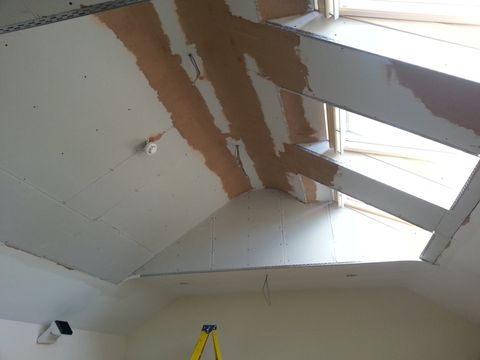If you know when to re-plaster the walls, you may be able to safeguard your property from long-term damage. It also ensures a high-quality interior finish. Walls are not just there to separate one room from another. Instead, it can help you achieve the necessary level of comfort, insulation, and a uniform visual backdrop. High-quality plaster also begins to crumble, crack, and develop texture over time. Builders in Bristol can help you determine the best time to look for a re-plastering service.
Signs To Call Experts for Re-plastering Service
Presence of Cracks on the Plaster
When you notice any cracks on the wall, you should call a plastering service to address the situation effectively. Fine hairline cracks happen due to minor shrinkage. However, larger cracks may indicate deeper underlying issues. Cracks often occur due to the constant fluctuation of temperature, structural movement, moisture damage, or poor plastering.
Cracks may become wider if these issues are left untreated for an extended period. Moisture may penetrate the walls, causing damage to the underlying structure. It may lead to mould and rotting of the walls. Experienced plasterers in Bristol can identify issues during an inspection and address them effectively. Re-plastering of the walls is a cost-effective method than repairing after the damage becomes serious.
Peeling, Bubbling, Or Flaking Plaster
Plaster bubbles, peels, and flakes are often a sign that moisture is becoming trapped within the surface. Leaks and condensation are typically the cause of these issues. If the plaster starts to feel chalky or paint may not adhere well, you should consult an expert for the necessary service.
Moisture trapped within the walls is a problem. Additionally, it can also cause the plaster to separate. Humid rooms such as bathrooms and kitchens suffer the most from this reason. Damp may spread at a rapid speed. Therefore, it may become necessary to restore the walls using replastering techniques for maintaining structural integrity and appearance.
Hollow-Sounding Plaster
Tapping the walls, if you hear a hollow sound, it means that the plaster has become detached from the walls underneath. Experts typically attribute the situation to age, vibration, and moisture damage. These issues are quite common in older homes, hallways, converted lofts and stairways.
Leaving the walls in the same state can lead to the accidental falling of the plaster. It can pose safety hazards and lead to injuries. Your home may not be able to retain its soundproofing or insulation features. For a long-term fix, you can utilise a professional re-plastering service. Patch repair work may not be effective at all.
If you ignore the above signs, you may have to pay later. Disruptive repairs can be expensive. Therefore, expert builders in Bristol from Cullimore Renovations recommend a re-plastering service when you observe these early signs.
